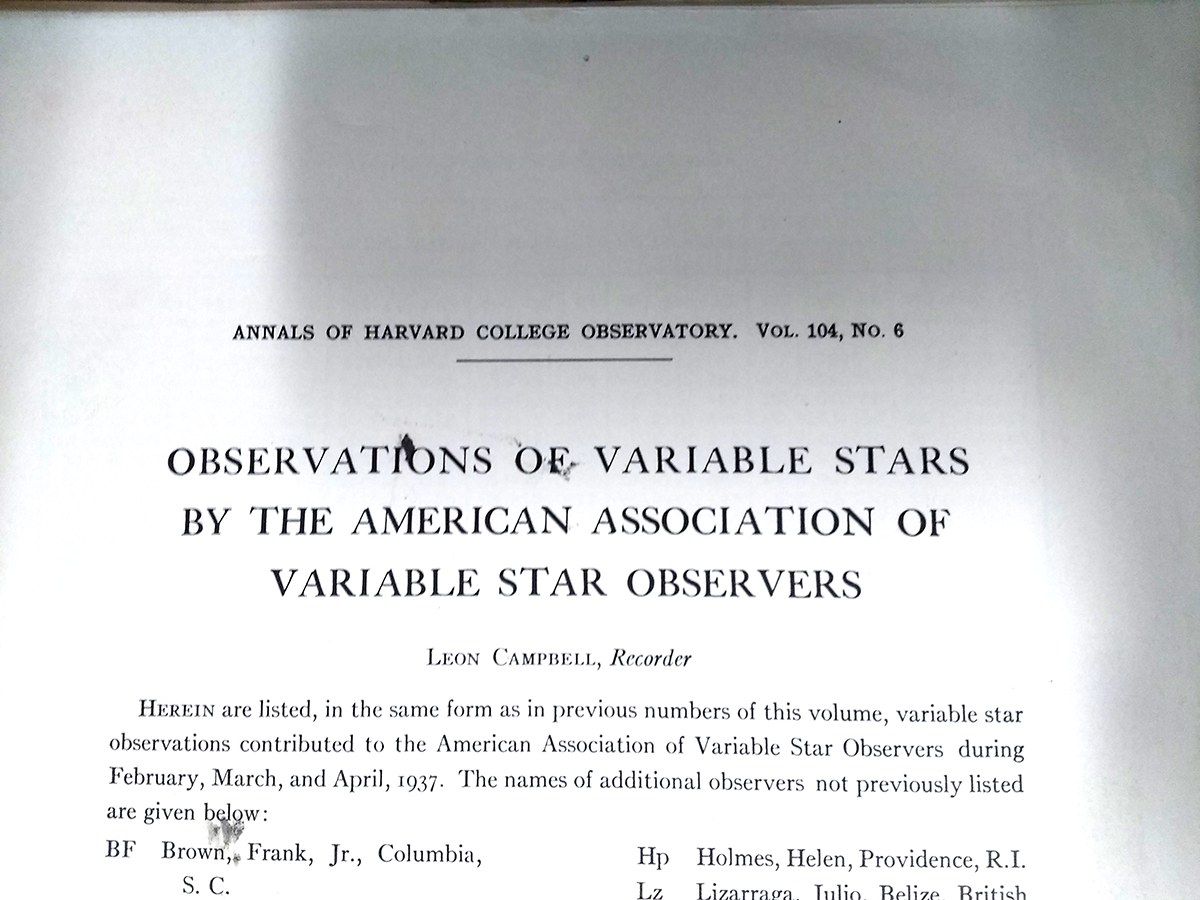
“Observations of Variable Stars by the American Association of Variable Star Observers”
One would expect there’s no better-qualified group for the task.
Discoveries in the Physics & Astronomy shop | Science, curiosities, and surprises

“Observations of Variable Stars by the American Association of Variable Star Observers”
One would expect there’s no better-qualified group for the task.

We have several boxes of NASA press releases from the height of the space age, for the simple reason that it’s easier to pack things away than to sort and dispose of junk. None of them are worth much, really, but they can be entertaining. Take this, for example, a summary of the Ranger 4 launch. Not mentioned here, but interesting: Ranger 4 was the first US spacecraft to reach another solar system body.
By crashing into the Moon, as intended. You can read more in a brief summary by Leonard David, or by skimming Wikipedia.
Entertaining bits gleaned from the Space Activities Summary:
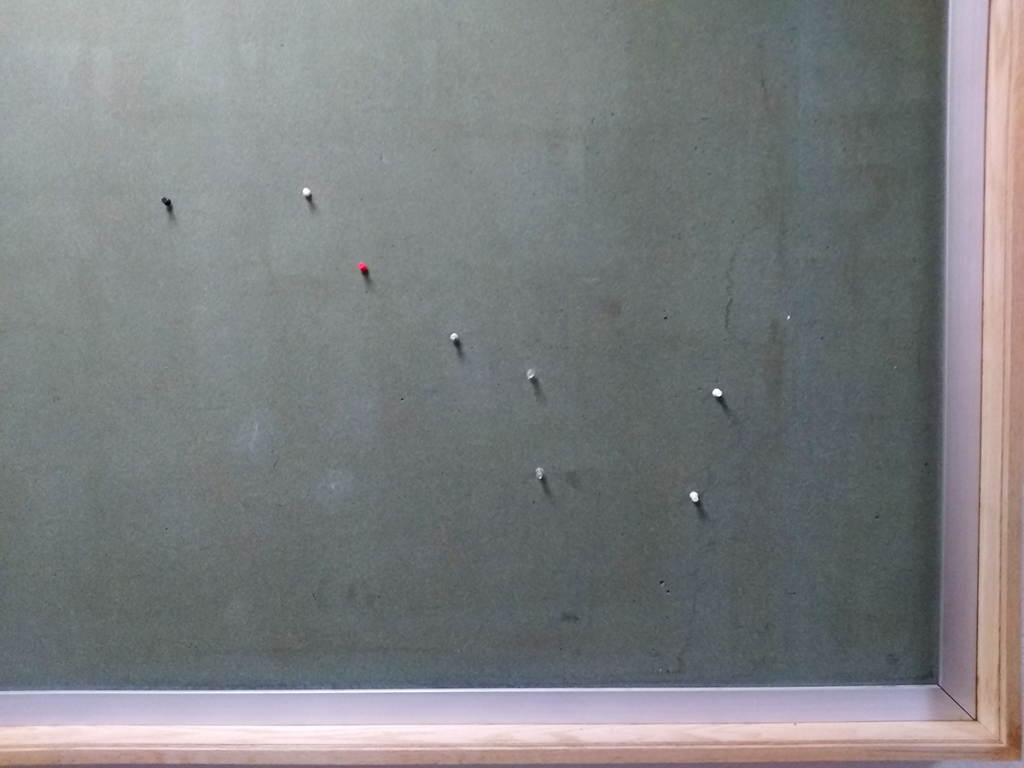
A surprise discovery on a hallway bulletin board at the Observatory: a push pin Big Dipper!
It’s good and charming and subtle, and we can forgive that this version has eight stars instead of the night sky’s seven. (Not counting the visual double of Mizar and Alcor where the handle kinks.) Someone did this on a whim, and now it’s hard to resist the idea of putting up others all over campus to see who notices.
Have a great semester break!
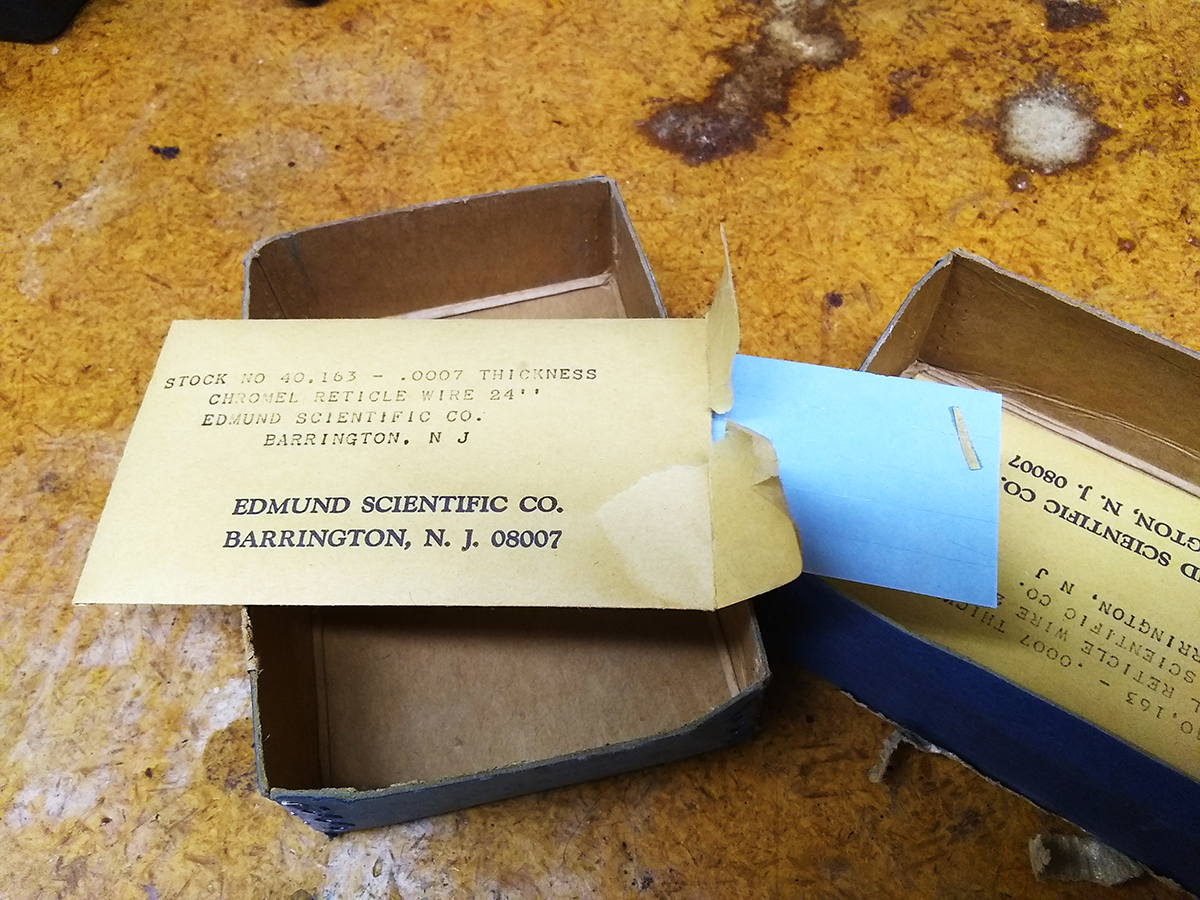
Making an ‘X’ across your telescope’s eyepiece is a handy thing, letting you mark the center instead of eyeballing it. There are all sorts of reasons you might appreciate that little bit of assistance, provided it doesn’t actively interfere with seeing things. So you use as fine a wire as you can. Which is going to break, of course, so keep some spares in the desk drawer.
How thin? This is AWG 53, all of 0.0007 inches thick (0.0178 mm). Enough to make even the finest human hair seem chunky in comparison.
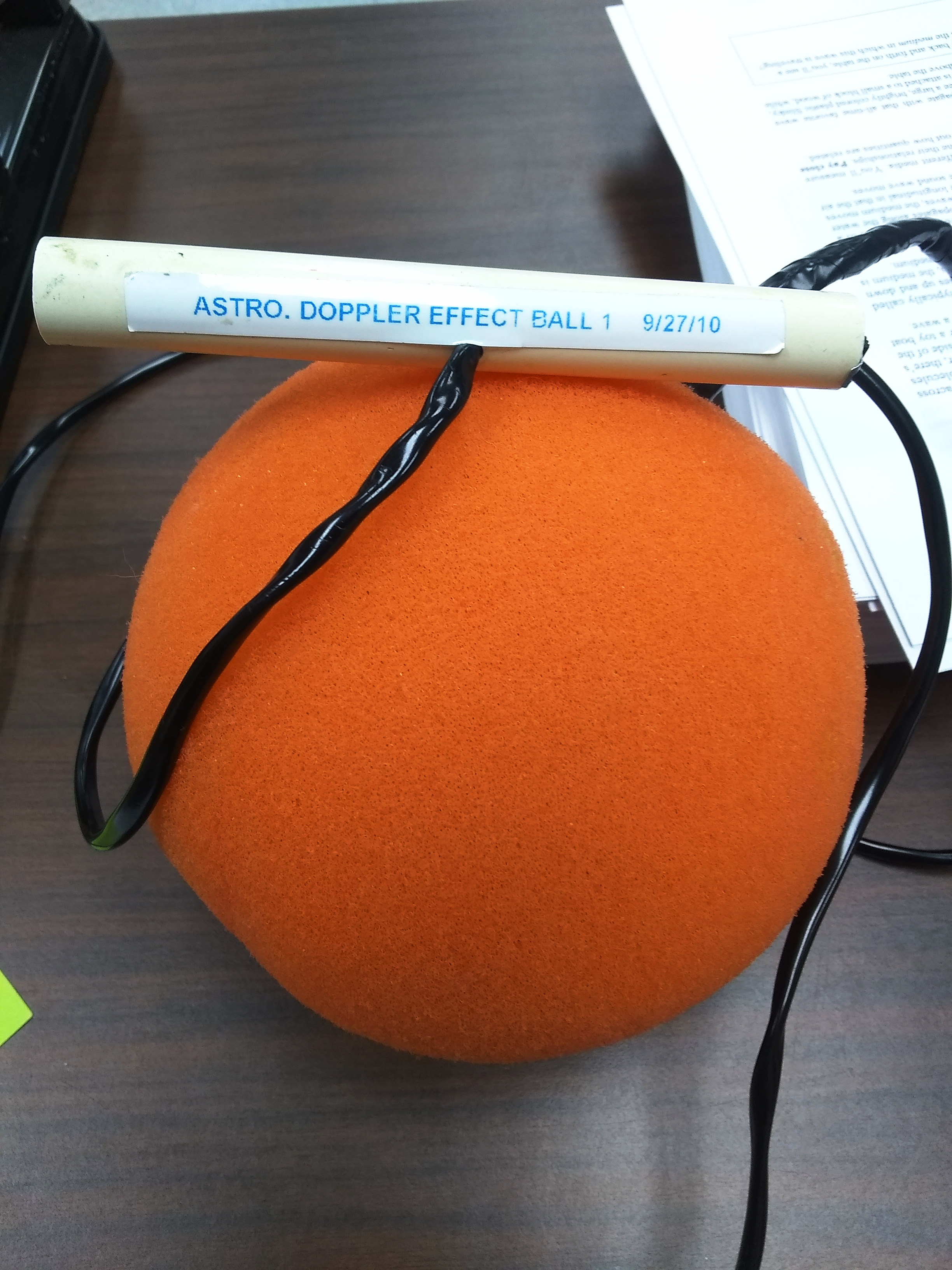
An electronic buzzer buried inside a foam ball, on a long cable with a switch and handle at the end. Flick the switch, and a piercing 2,500 Hz signal begins. Whirled in a big circle around your own head, the tone persists. For everyone else in the room, it creates a cyclic Doppler shift, a repeating weeee-oooo, weeee-oooo that sticks in the brain even after it’s done, like when you see phosphene images behind your eyelids after catching a glimpse of something way too bright.
We can’t overstate the wonderful modifications to the original object, back in 2010, which added the cable and switch. Your bog-standard Doppler ball – available from several scientific apparatus purveyors – requires one to open up the ball, turn on the buzzer, then close it back up. Tossing it back and forth between students illustrates the concept.
Then, when you’ve had quite enough and just want it to stop, you have to pry it open and shut the whole thing off. (This vintage version, pre-mod, required full-on battery removal.) The Doppler ball: it teaches us all kinds of new lessons!
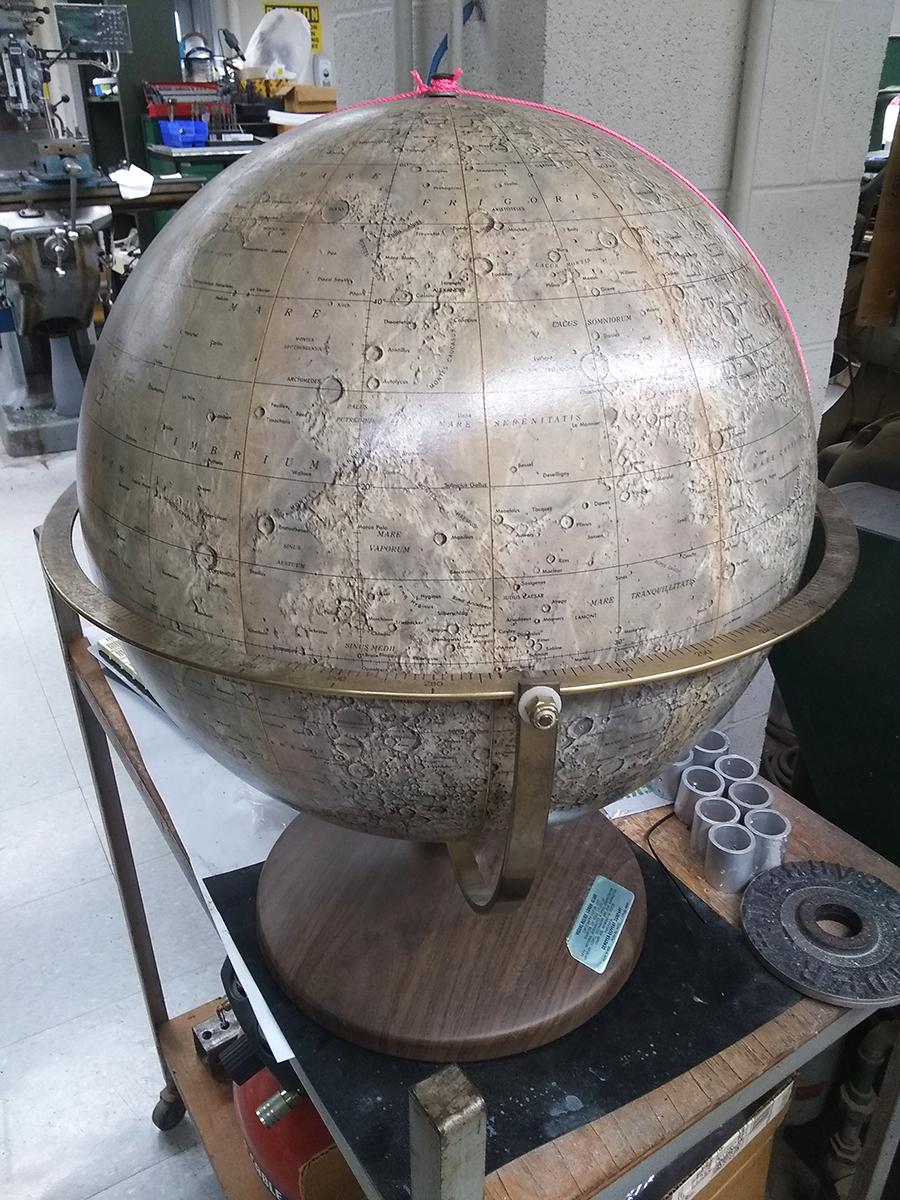
From the days before planetarium software was readily available, we have an intense glut of celestial globes, which show the positions of the stars and constellations on the night sky. Also the day sky, of course, but unless you’re watching a total solar eclipse they get lost in the bright blue light scattered by our atmosphere. They get little use except as office decorations.
We have two Earth globes – one is a giant, inflatable beach ball – which still get regular use in Astronomy classes. Unsurprisingly, visualizing the movement of an Earthbound observer on a tilted, rotating, orbiting planet around the sun isn’t always intuitive. Having a mini-Earth to look at helps immensely.
We also have a very nice lunar globe, which really should see more use. It’s highly detailed, including on the side of the moon that only a handful of humans have ever seen. (More craters, fewer mare.) If you dig maps, it’s a very cool map.
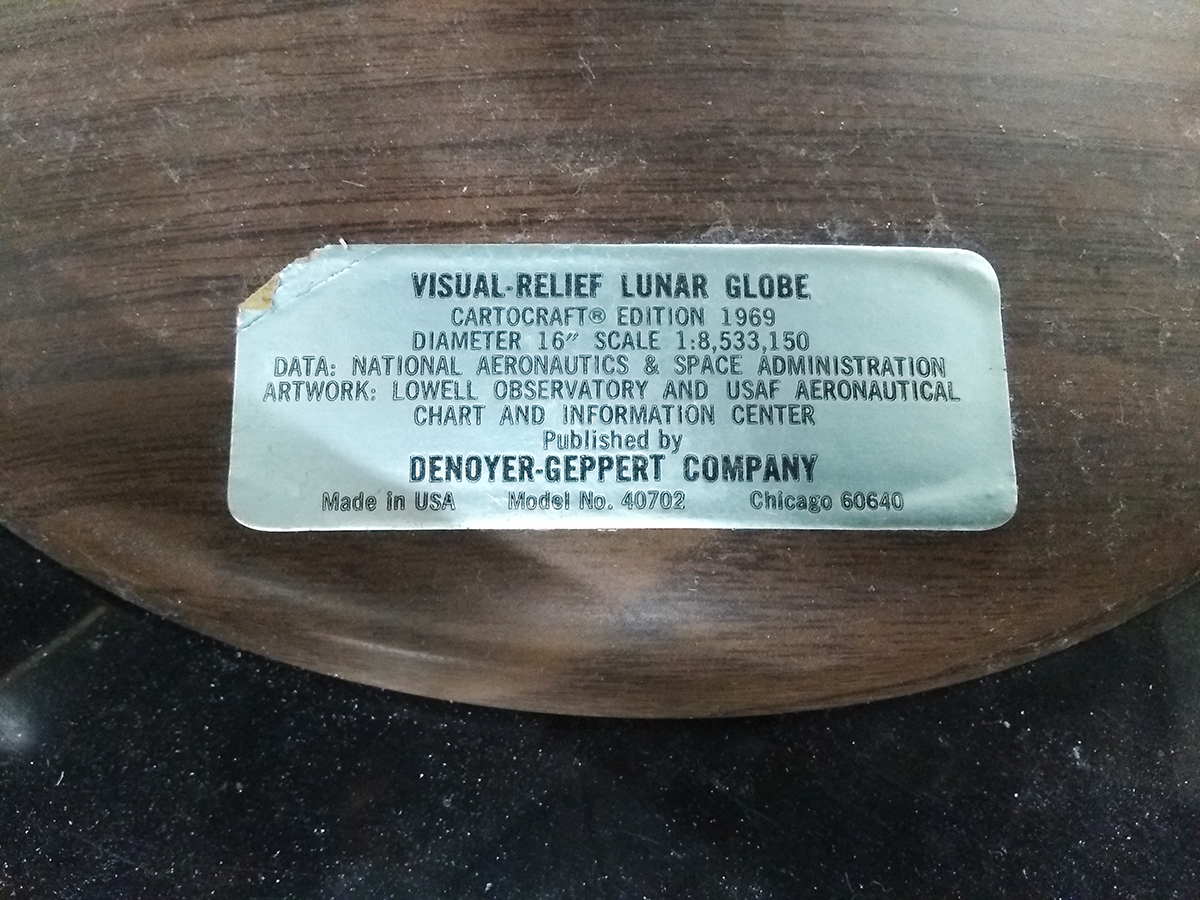
And when did this charming item come into being? 1969, of course.
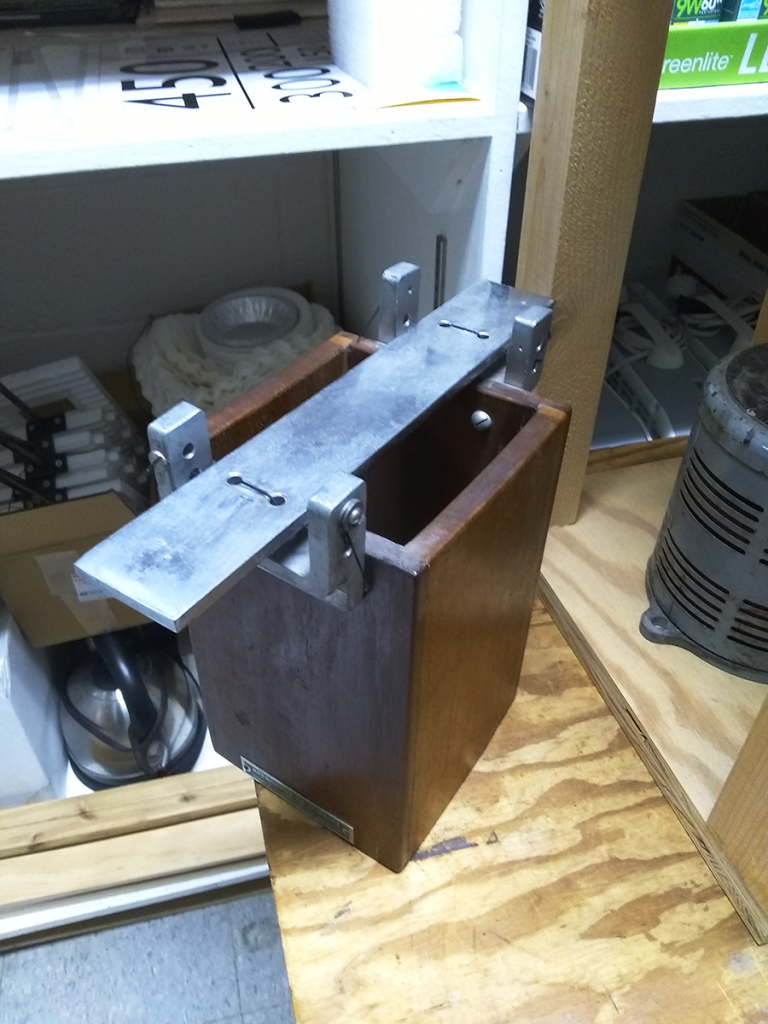
Both Physics and Astronomy courses do a lot of work with waves, and while light is one of the most important types for study, sound is exceptionally handy for demonstrations. There’s an immediacy, a feel, that can make sonic demos feel more intuitive.
We have a few of these about, metal bars with supports at the nodes of a standing wave, seated over a wooden box. The string goes where the bar doesn’t vibrate, and hence doesn’t dampen the sound, while the box helps it resonate louder. Ka-bong! They’re quite fun.
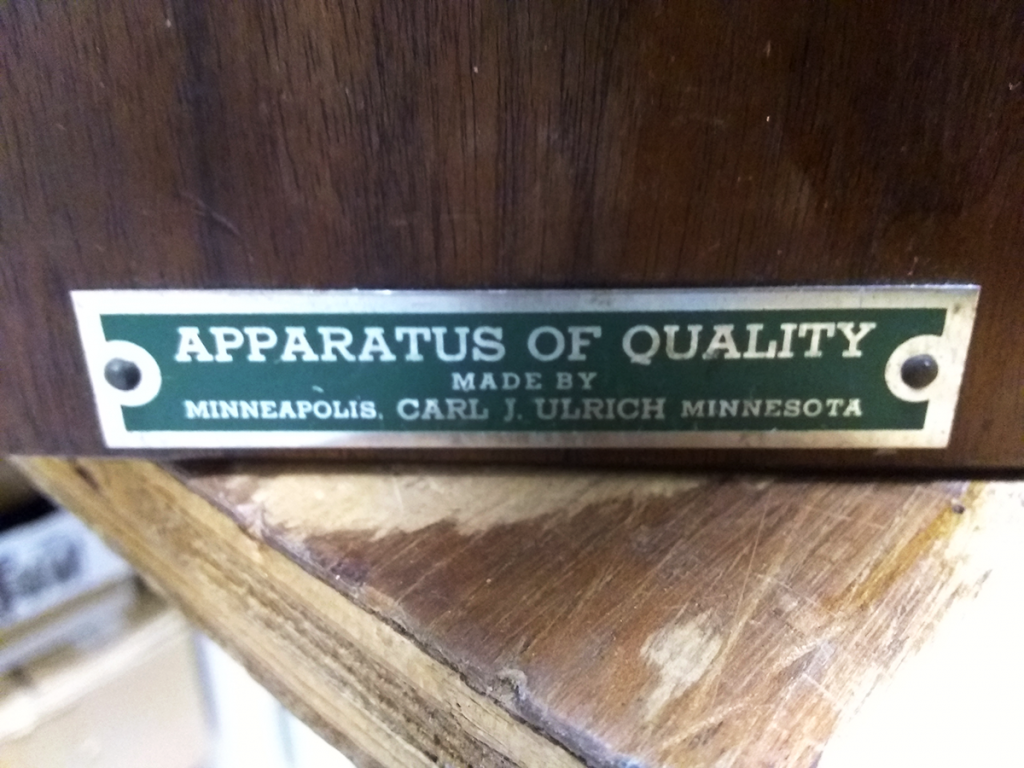
And, yes, Carl J. Ulrich of Minneapolis, Minnesota did some fine work here.

In the early ’90s, we had an Astronomy Club. Reading through old club meeting minutes sometimes turns up little gems, like these:
“Sorry for the late minutes. The secretary had a lot of tests at the end of last week.”
Completely understand. Full respect for those priorities.
“Because of clear skies, the meeting did not last long.”
We’re here for the telescopes, not chit-chat! Again: completely understand!

Once upon a time – for a good long while, in fact – mathematics and astronomy overlapped. Now, of course, astronomy is considered more appropriately physics-adjacent, and mathematics would like to make it clear that while they share a department with statistics, the two really are their own, distinct fields.
Then there’s the fuzzy boundary zone between biophysics and applied mathematics and mechanical engineering…
Welcome to the new semester!

In our attempts to minimize the ever-growing aura of light pollution around the Observatory, we work to form good relationships with our neighbors. And to maintain them.
Back in 1979 – an excellent vintage! – the Keystone Water Company agreed to a switch controlling the light outside their standpipes, just south of the Observatory. For as long as we remain good stewards of the switch, always turning it back on when we’re done observing, they let us adjust the night sky’s brightness just a little bit more each night.
Forty-four years and counting.